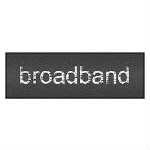 An updated version of the annual FCC Broadband Deployment Report is currently circulating within the FCC. The new version is based on revised data and was undertaken when a major error was discovered after the report had been issued. The FCC broadband report error resulted from broadband provider Barrier Communications dramatically overstating its coverage area.
An updated version of the annual FCC Broadband Deployment Report is currently circulating within the FCC. The new version is based on revised data and was undertaken when a major error was discovered after the report had been issued. The FCC broadband report error resulted from broadband provider Barrier Communications dramatically overstating its coverage area.
When the report based on data from 2017 was originally issued, a key finding was that broadband was being deployed in a reasonable and timely manner and that finding doesn’t change in the revised report.
“Fortunately, the new data doesn’t change the report’s fundamental conclusion: we are closing the digital divide, which means we’re delivering on the FCC’s top priority,” said FCC Chairman Ajit Pai in a press release.
FCC Broadband Report Error
The FCC broadband report error came to light shortly after the report’s release when public interest group The Free Press expressed concerns about Barrier Communications’ data in a letter sent to the commission.
In reviewing the data on which the report was based, The Free Press noticed that Barrier, which operates under the name BarrierFree, had reported that it provided broadband at speeds of 940 Mbps downstream and 880 Mbps upstream to census blocks containing nearly 62 million people, which if true, would make Barrier the fourth largest provider in the U.S. in terms of population coverage.
“This claimed level of deployment stood out to us for numerous reasons, including the impossibility of a new entrant going from serving zero census blocks as of June 30, 2017 to serving nearly 1.5 million blocks containing 20% of the U.S. population in just six months,” wrote The Free Press. “We further examined the underlying Form 477 data and discovered that BarrierFree appears to have simply submitted as its coverage area a list of every single census block in each of eight states in which it claimed service.”
According to The Free Press analysis, Barrier’s data was so erroneous that it impacted overall report findings. The organization estimated that the number of Americans without broadband service at speeds of at least 25/3 Mbps was 21.3 million, rather than the 19.4 million referenced in the report.
The revised version of the FCC broadband deployment report upholds that finding, according to the FCC press release. That means the percentage increase in Americans who had broadband available to them dropped by 18% between 2016 and 2017, rather than 25% as originally calculated.
Nevertheless, the FCC said the report continues to support the conclusion that “significant progress has been made in closing the digital divide in America.”
The findings of the annual report have always been contentious, with Republican commissions generally satisfied with the pace of broadband deployment and Democrats generally unsatisfied. Democratic Commissioner Jessica Rosenworcel disagreed with the report’s initial finding, even when the numbers were more positive. so she and other Democrats are certain to disagree with the finding of the revised report.
Image courtesy of flickr user Sean MacEntee.


